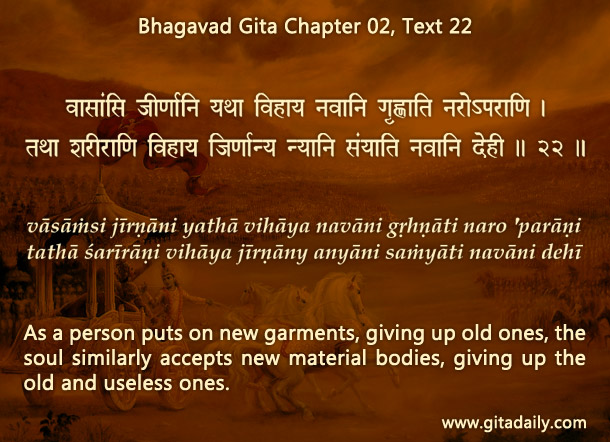The Bhagavad-Gita perspective on organ donation
The Bhagavad-Gita and the Vedic texts, in general, do not provide a specific directive about organ donation. However, they do offer universal principles that can be applied to gain insights on this issue. There are also relevant examples from sacred texts that, while not exact parallels, are similar enough to provide useful pointers.
Broad principles for decision-making
The Mahabharata outlines three key factors for determining the rightness of an action:
- The content of what is being done,
- The intent with which it is done, and
- The consequences that result when it is done.
Different individuals may prioritize one factor over the others. For instance, some focus more on the consequences, while others emphasize intent. Let’s explore these principles in the context of organ donation.
Examples from sacred texts
Organ transplants in scriptural narratives:
We find examples of organ transplants in the Puranas. For instance, when Daksha was beheaded, the head of a sacrificial animal was transplanted onto his body, restoring him to life. Similarly, after Ganesh’s head was severed by Shiva, the head of an elephant was transplanted. While these instances don’t involve humans and lack consent, they demonstrate the concept of organ replacement.
Consent and human-to-human exchange:
A closer parallel is found in the story of King Yayati, who was cursed to lose his youth. He requested his sons to exchange their youth for his old age. Most refused, but one agreed, sacrificing his vitality to fulfill his father’s desires. Although no physical organ transplant occurred, this represents a human-to-human exchange involving consent. The son’s act was considered a noble sacrifice.
These examples highlight scenarios involving consent and selflessness, which align with the principles underlying organ donation.
Conservative and liberal perspectives
Conservative view:
Those with a conservative mindset may argue for maintaining the natural order and avoiding interference with the body’s natural course. They may express concerns that donated organs could be misused, potentially implicating the donor in the karma of such misuse. Some may also feel that the body should remain intact for sacred rituals, such as cremation.
Liberal view:
A liberal perspective emphasizes the intent of service. Life is meant for service, and if our organs can alleviate someone’s suffering, such as restoring sight to a blind person, it aligns with the spirit of charity. This view also suggests that attachment to the body after death is unnecessary, as the soul has moved on. The Bhagavad-Gita (2.22) reminds us that the body is like a set of garments that the soul discards at death.
A balanced approach
Ultimately, the tradition and institution offer no unified stance on organ donation. Each individual, guided by their mentors and personal inspiration, can make their decision. If organ donation is done with a sincere mood of service and prayerfulness, it is unlikely to incur any negative consequences. The intent behind the act is key, and any unintended misuse of the donated organ is beyond the donor’s control.
This nuanced approach ensures that organ donation remains a deeply personal decision, rooted in both spiritual and practical considerations.
***
02.22 As a person puts on new garments, giving up old ones, the soul similarly accepts new material bodies, giving up the old and useless ones.



Leave A Comment